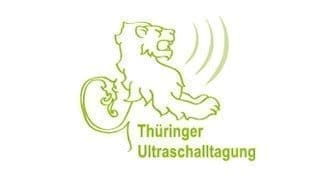MVZ Dres. Medical. Brückmann
Feindiagnostikpraxis
Dres. Med. Brückmann & Colleagues
Your specialists in Gynaecology & Fine Diagnostics
Detailed anomaly scan | Erfurt | Jena | Weimar | Prenatal diagnosis
Detailed anomaly scan (prenatal diagnosis) in Erfurt, Dres. Med. Brückmann
Organizational chart for prenatal diagnosis during pregnancy / first trimester screening
Upon arrival, we kindly ask you to show your pregnancy book, transfer voucher and health insurance card. At the reception, you will receive a questionnaire sheet, questions and information about the planned screening
If the test conditions allow three-dimensional images or 4-D videos for your child, you can get these images either digitally ( 3D images or 3D video ) or as hard copies ( 3D images ). Additional 3D gifts or small video recordings can be obtained regardless of your appointment at our clinic from Studio Baby4D next door to us.

With all due respect, you can bring someone with you. Due to the presence of other pregnant Ladies, we ask kindly that you do not bring sick children to the clinic rooms, since pediatric illnesses in particular can have serious consequences for pregnant women and their unborn children.
In the case of multiple pregnancies (twins) or when test abnormalities are being diagnosed, the examination period will be extended accordingly. For this reason, there may be long waiting times.
Please note that in our practice, we conduct several consultations at a time, so the order of the call may vary among patients in the waiting room.
More services for you
First trimester screening / Neck wrinkle measurement
Pränataldiagnostik, fetale Echokardiographie
Lifecodexx PraenaTest® (Trisomie21,18,13-Bluttest)
genetische Beratung / Humangenetik
Fruchtwasserpunktion (ACT / CVS)
Präeklampsiescreening (Risikoberechnung)
Betreuung von Risikoschwangerschaften
Einlagerung von Nabelschnurblut
Gerinnungsstörung / Autoimmunerkrankung
Präventivmedizin (Wie fit sind Ihre Gefäße?)
Is fetal in good health or does he suffers from a chromosomal disorder such as trisomy 21 (Down’s syndrome)?
Genetic DNA from our map, which consists of 46 chromosomes consist (chromosome) are present in our cell nucleus. When fertilizing the egg and sperm, each with 23 chromosomes, a new life is created with 23 pairs of chromosomes (46 individual chromosomes). In ovarian oocytes, the paste is a protein (Kouhsin) responsible for the installation of chromosomes, which loses power or the link is being reduced with increasing maternal age. This lack of cochine protein leads to poor chromosome distribution during cell division during fetal development.
Chromosomal disorders are very rare and occur less than 1: 10 (<<1 %) in all live births. Therefore, one in every 100 live-born children may have a genetic defect. However, such abnormalities or mutations can be very mild, as in the inability to absorb lactose.
The disadvantage of genetic most common in humans is trisomy 21 (repeated chromosome 21 three times instead of twice) the possibility of 1: 700 (0.14%), followed by trisomy 18 (1: 3000; .03%), trisomy 13 (1: 5000, 0.02 %) and the syndrome of gymnastics – mono-oral (1: 5000 % 0.02). 50-70% of the infected embryos (chromosome 21) show in the 20-22 week of pregnancy abnormalities clear when ultrasound examination (sonar).
The gold standard for the diagnosis of chromosomal abnormalities is taking a sample of amniotic fluid (amniocentesis) or puncture the placenta (chorionic villi samples). However, despite the greatest care, each of these interventional procedures is associated with a miscarriage risk of 0.2-1 % (1: 500-1: 100).
It is therefore morally and morally unreasonable to subject any pregnant woman to diagnose interstitial chromosomes (amniotic fluid or placenta) because, at least before age 40, the risk of miscarriage is greater than the risk of triglycerides.
A woman 20 years of age and 13 weeks of gestation has a probability of less than 1: 1000 (0.1 %) having a child with a 21 % (Down syndrome), while a 40 year old woman has a 1 % That her fetus is infected with this syndrome.
There is certainly a variety of physical malformations of hereditary origin (10 %), but there are also fetal abnormalities of 2 % (1:50) occurring without known or unexplored genetic mutation. Through high-resolution ultrasound tests (first trimester screening, early diagnosis and accurate diagnosis of the fetus), approximately 95 % of these physical disorders can be detected under conditions and conditions of good examination.
Literature:
Kurahashi, H., M. Tsutsumi, S. Nishiyama, H. Kogo, H. Inagaki, and T. Ohye. 2012. “Molecular basis of maternal age-related increase in oocyte aneuploidy.” Congenit Anom (Kyoto) 52(1):8-15.
Scharf A.: Der PraenaTest aus pränatalmedizinischer Sicht. Frauenarzt 53 (2012) 739-741
Nicolaides, K. H. 2005. “First-trimester screening for chromosomal abnormalities.” Semin Perinatol 29(4):190-4.
How can the risk of individual injury be assessed by the most common chromosomal disorders and when amniocentesis or placental puncture is recommended?
For trisomy 21, 18 and 13 Diagnosis, examination of the first trimester (ETS) In the 11-14 weeks of gestational age is available by assessing neck thickness (nuchal translucency, NT), And the bones of the nose and other parameters of ultrasonic (venous channel, tricuspid valve in the heart, visual angle, blood flow in the hepatic artery) and a blood sample taken (PAPP-A And ß HCG Free). We can calculate the probability of these chromosomal disorders. The efficacy and sensitivity of the test is about 90-95 % with the possibility of false positive results of 2.5-5 %. At the end of the examination, you will be informed of the outcome and medical advice on whether you need to examine the interstitial chromosomes (amniocentesis or placenta). In addition, this examination can detect evidence of severe organic deformities.
Der neue Pränatest® der Firma Lifecodexx ist ein Bluttest der die Konzentration zellfreier DNA-Bruchstücke vom ungeborenen Kind aus dem mütterlichen Blut misst und daraus die Wahrscheinlichkeit für das Auftreten einer Trisomie 21, 18 und 13 berechnet. It is a blood test that measures the concentration of fragments of fetal DNA (cell – free) from the mother’s blood and calculates the probability of trisomy 21, 18 and 13. Ein positives Testergebnis muss mit einer invasiven Chromosomendiagnostik (Fruchtwasser- oder Plazentapunktion) gesichert werden, da dieses Nachweisverfahren den kompletten Chromosomensatz analysiert.
Literature:
Sonek, J., and K. Nicolaides. 2010. “Additional first-trimester ultrasound markers.” Clin Lab Med 30(3):573-92.
Zvanca, M., Y. Gielchinsky, F. Abdeljawad, C. M. Bilardo, and K. H. Nicolaides. 2011. “Hepatic artery Doppler in trisomy 21 and euploid fetuses at 11-13 weeks.” Prenat Diagn 31(1):22-7.
Nicolaides, K. H. 2011. “Screening for fetal aneuploidies at 11 to 13 weeks.” Prenat Diagn 31(1):7-15.
Pränatest ® new examination from the company Lifecodexx
Liebe Schwangere,
It is a blood testthat measures the concentration of fragments of fetal DNA (cell – free) from the mother’s blood and calculates the probability of trisomy 21, 18 and 13. Als Referenzzentrum bieten wir Ihnen die Möglichkeit diesen Test bei uns durchführen zu lassen. Eine entsprechende Beratung nach Gendiagnostikgesetz muss vor Durchführung des Tests und nach Erhalt der Ergebnisse erfolgen.
Der neue Pränatest® der Firma Lifecodexx ist ein Bluttest der die Konzentration zellfreier DNA-Bruchstücke vom ungeborenen Kind aus dem mütterlichen Blut misst und daraus die Wahrscheinlichkeit für das Auftreten einer Trisomie 21, 18, 13 berechnet. A decision-making aid with a high sensitivity of 95 % with a false positive result of 0.5% A positive test result must be confirmed by the additional diagnosis method of the interstitial chromosome (amniotic fluid or placenta) as this method of analysis analyzes the entire set of chromosomes.
Literature:
Eiben B. et al: Trisomie-21-Analyse aus mütterlichem Blut. Frauenarzt 53 (2012) 834-835
Scharf A.: Der PraenaTest aus pränatalmedizinischer Sicht. Frauenarzt 53 (2012) 739-741
Ersttrimesterscreening
Für die Trisomie 21, 18 und 13 kann mit Hilfe des Erstrimesterscreenings (ETS) schon in der 11.-14. SSW durch die Beurteilung der Nackenfalte (nuchal translucency, NT), des Nasenbeins und weiterer sonographischer Parameter (Ductus venosus, Trikuspidalklappe am Herzen, Gesichtswinkel) und einer Blutentnahme (PAPP-A und freies ß HCG) die Wahrscheinlichkeit für das Auftreten dieser Chromosomenstörungen berechnet werden. The efficacy and sensitivity of the test is about 90-95 % with the possibility of false positive results of 2.5-5 %. In addition, this examination can detect evidence of severe organic deformities. At the end of the examination, you will be informed of the outcome and medical advice on whether you need to examine the interstitial chromosomes (amniocentesis or placenta). In addition, this examination can detect evidence of severe organic deformities.
Early detailed anomaly scan:
In some cases, such as multiple pregnancy or a primary disease when pregnant or when you follow the development of fetal abnormalities by ultrasound during maternity care, it may be necessary to conduct an “ultrasound and large – scale” at an early stage, usually between 14 and 17 weeks of pregnancy. In these cases, the costs are covered by legal health insurance.
Advanced detailed anomaly scan:
The further differential ultrasound diagnostics include the diagnosis of abnormalities or diseases of the placenta, amniotic fluid or fetal organs, which may also indicate disturbances in growth and development. In Advanced detailed anomaly scan, integration with the echocardiography of the fetus is involved. This means looking for abnormalities in the cardiac system and evaluating the fetal heart and vessels near the heart. The most suitable time for the accurate survey sonar is 19-22. Week of pregnancy. But it can also be done at any other time during pregnancy. Are given reasons diagnostics detailed in Annex 1 C of the maternity guidelines require a referral from a gynecologist therapist In addition, the desire ( the so – called individual health care) to learn more about the developing fetus, for safety reasons, it can be the cause and Calling for careful diagnosis.
Doppler ultrasound imaging
Doppler ultrasound imaging is the use of ultrasound to study blood flow within the blood vessels. The reasons for this additional examination are often suspicion of placental dysfunction with delayed fetal development.
Umbilical cord blood
Your child’s umbilical cord blood contains stem cells that can be used for therapeutic measures. Stem cells are non-specific cells that can develop into multiple cells, for example to nerves, blood or skin cells. Affected organs can be treated by using stem cells.
It is a painless way and has good compatibility with other stem cells when donated. Instant abundance of stem cells is not the only advantage to donate bone marrow, but also the great potential of young cells. The amount of cord blood that can be withdrawn is limited and therefore must be withdrawn quickly when the patient grows. Risiken sind nicht bekannt.
Umbilical cord blood can be used for special purposes, such as directed donation, or combined donation.
Consultation of coagulation disorders and autoimmune diseases
- Coagulation (thrombophlebitis)
- Clarification of abortion (habitual abortion), and clarification of immunological abortion
- Taking care of pregnant women when there is an increased risk of pre-eclampsia or delayed growth
- Pregnancy counseling for coagulation disorders, thrombosis or thrombosis during pregnancy
- Autoimmune diseases and pregnancy
Preventive Medicine (How appropriate is your vessel?)
- Prevention of stroke, heart attacks and diabetes
- Early detection of preeclampsia (high blood pressure during pregnancy) and delayed growth





